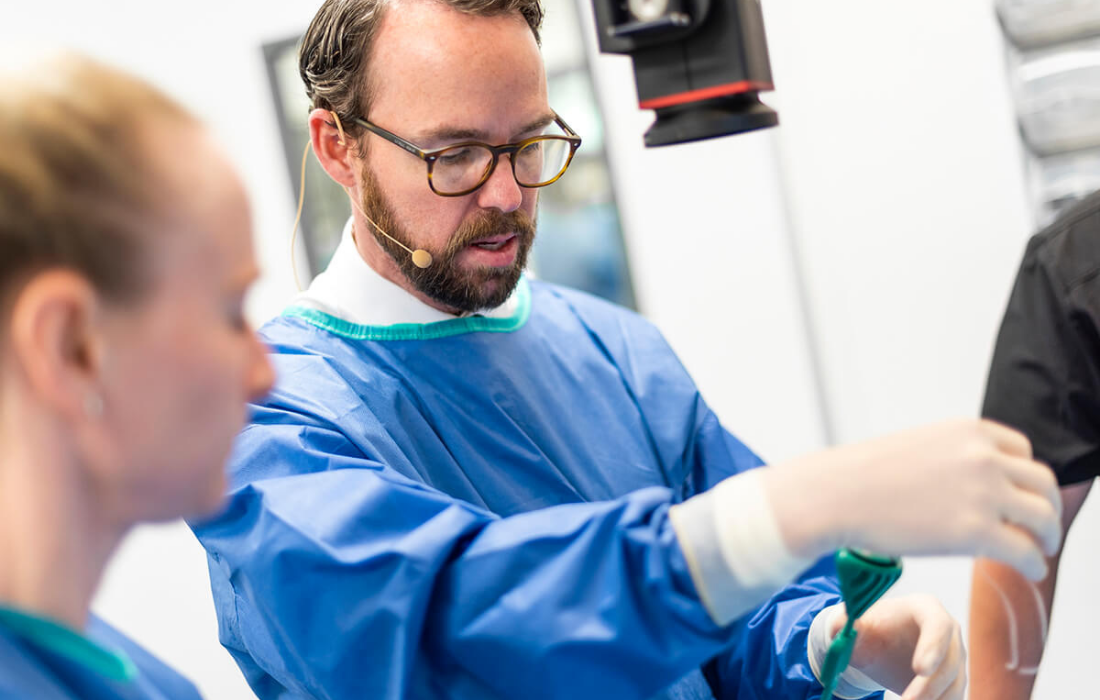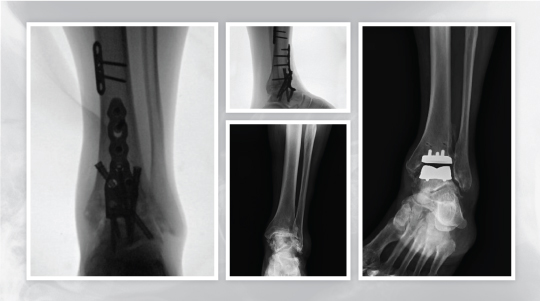Whether you’re dealing with arthritis or an old injury acting up, pain in your ankle can make walking feel unbearable. Ankle fusion surgery can help stabilize your joints so that you don’t have to live with daily pain and inflammation anymore. This procedure isn’t right for everyone, but it can make an excellent option for the right candidate and bring vitality back into your life.
What Is Ankle Fusion?
Ankle fusion surgery uses screws and plates to bind your ankle to your tibia. By fusing your bones, this procedure makes it so you can no longer move or rotate your ankle. As a result, it eliminates the pain caused by an arthritic ankle.
Ankle fusion surgery often corrects ankle deformities by holding the bone structures in place. However, because it completely prevents your angle from rotating, it can also cause more stress to other joints, worsening arthritis in other areas.
If your surgeon doesn’t recommend ankle fusion surgery, they may suggest a total ankle replacement. Total ankle replacement surgery removes the painful joint and inserts a joint made of metal and plastic. With this procedure, you can save your ankle mobility while still improving your arthritis and walking as you normally would.
What Does It Treat?
Most commonly, ankle fusion treats arthritis in the ankle. You may be a candidate if you have osteoarthritis, rheumatoid arthritis, or injury-related arthritis. Ankle fusion surgery is typically reserved for patients with severe arthritis that they can no longer treat using day-to-day medications and have failed non-operative treatments listed below. Most people who receive ankle fusion surgery have tried other treatments, such as:
- Pain medicine
- Corticosteroid injections
- Shoe inserts or custom shoes
- Physical therapy
- Ankle braces
- Avoiding activities that worsen pain
How Is It Performed?
Before your ankle fusion, you’ll need to prepare by stopping certain medications in advance. Your surgeon may order imaging tests, such as an X-ray or CT scan, to look at the joint before surgery. You can’t eat or drink before your surgery, and you’ll need someone to help care for you while you recover, as you won’t be able to walk as normal.
During the procedure, the surgeon makes an incision in your ankle. The surgeon then uses screws, bone grafts, and plates to keep the ankle in place and properly connected to other bones in the area. Then, they stitch the incision, and you begin your ankle fusion recovery which requires a period of non-weightbearing with a cast for 6-8 weeks.
Who Is a Candidate?
If you’ve tried other arthritis treatments without success and continue to have pain and difficulty with daily activity, you may qualify for ankle fusion. Your doctor can answer questions regarding the choices for either ankle fusion or ankle replacement.
You should not have ankle fusion surgery if you have a current or lasting infection in your ankle, your bones can’t provide enough support for the implants, or have low muscle tone.
If you’re tired of achy ankles, University Orthopaedic Associates has foot and ankle specialists to help you determine if ankle fusion surgery is right for you. Schedule a consultation with UOA to talk about your options for living a more mobile life.




